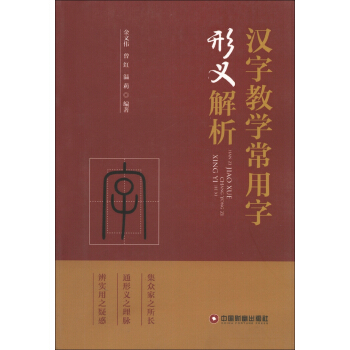![语言教学教程:实践与理论 [A Course in Language Teaching:Practice and Theory]](https://pic.tinynews.org/10213098/65539890-d2a1-4b3f-8d18-097894cbfbbb.jpg)

具体描述
编辑推荐
A Course in Language TeachingPractice and Theory This comprehensive training course provides a complete introduction to teaching languages,for use in both pre-service or in-service settings. It can be used by groups of teachers working with a trainer, or as a self-study resource.The course consists of modules on key topics such as Practice Activities, Testing, Teaching Reading, Lesson Planning, Teaching Large Heterogeneous Classes - and many others. Each module presents both practical and theoretical aspects of the topic, with tasks. Modules can be used in sequence or selectively.
Suggestions for classroom observation and practice, action research projects and further reading are included. Notes for the trainer, with stimulating insights from the authorspersonal experience, complete the course.
Penny Ur is a teacher and teacher-trainer, and is the author of several successful books for teachers in the Cambridge Handbooks for Language Teachers series: Discussions that Work,Five-Minute Activities(with Andrew Wright),Grammar Practice Activities, and Teaching Listening Comprehension.
内容简介
在编辑这个文库时,我们在两方面下了功夫。一方面,在选书时,我们求全,求新,求有代表性和前瞻性。我们不偏爱一家之言,也不只收一家外国出版社之书。语言学与应用语言学的主干学科固然受到了应有的重视,分支学科可也不忽视。语料语言学、语言统计学是新兴学科,我们收入了专著;句法学、语义学久已有人研究,我们也找到了有关的最新著作。
另一方面,我们邀请了国内知名的博士生导师、硕士生导师为各书撰文导读,为读者铺平道路。语言学和应用语言学专著包罗宏富,初学者读起来可能觉得茫无头绪。为了助他们一臂之力,本文库中每一种书我们都请专家写了一万字左右的导读材料。哪怕书中内容比较陌生,谁只要在读书前看一下导读材料,读书后把材料再看一遍,一定能弄清脉络,掌握要点。
内页插图
目录
Units with a symbol are components of the core course; those with a symbol are optionalPreface by Halliday
王宗炎序
导读
Acknowledgements
Read this first: To the (trainee) teacher To the trainer
Introduction
Part I The teaching process
Module 1: Presentations and explanations
Unit One: Effective presentation
Unit Two: Examples of presentation procedures
Unit Three: Explanations and instructions
Module 2: Practice activities
Unit One: The function of practice
Unit Two: Characteristics of a good practice activity
Unit Three: Practice techniques
Unit Four: Sequence and progression in practice
Module 3: Tests
Unit One: What are tests for?
Unit Two: Basic concepts; the test experience
Unit Three: Types of test elicitation techniques
Unit Four: Designing a test
Unit Five: Test administration
Part II Teaching the language(1)Thewhat
Module 4: Teaching Pronunciation
Unit One: What does teaching pronunciation involve?
Unit Two: Listening to accents
Unit Three: Improving learners pronunciation
Unit Four: Further topics for discussion
Unit Five: Pronunciation and spelling
Module 5: Teaching vocabulary
Unit One: What is vocabulary and what needs to be taught?
Unit Two: Presenting new vocabulary
Unit Three: Remembering vocabulary
Unit Four: Ideas for vocabulary work in the classroom
Unit Five: Testing vocabulary
Module 6: Teaching grammar
Unit One: What is grammar?
Unit Two: The place of grammar teaching
Unit Three: Grammatical terms
Unit Four: Presenting and explaining grammar
Unit Five: Grammar practice activities
Unit Six: Grammatical mistakes
Module 7: Topics, situations, notions, functions
Unit One: Topics and situations
Unit Two: What ARE notions and functions?
Unit Three: Teaching chunks of language: from text to task
Unit Four: Teaching chunks of language: from task to text
Unit Five: Combining different kinds of language segments
Part III Teaching the language(2):Thehow
Module 8: Teaching listening
Unit One: What does real-life listening involve?
Unit Two: Real-life listening in the classroom
Unit Three: Learner problems
Unit Four: Types of activities
Unit Five: Adapting activities
Module 9: Teaching speaking
Unit One: Successful oral fluency practice
Unit Two: The functions of topic and task
Unit Three: Discussion activities
Unit Four: Other kinds of spoken interaction
Unit Five: Role play and related techniques
Unit Six: Oral testing
Module 10: Teaching reading
Unit One: How do we read?
Unit Two: Beginning reading
Unit Three: Types of reading activities
Unit Four: Improving reading skills
Unit Five: Advanced reading
Module 11: Teaching writing
Unit One: Written versus spoken text
Unit Two: Teaching procedures
Unit Three: Tasks that stimulate writing
Unit Four: The process of composition
Unit Five: Giving feedback on writing
Part IV Course content
Module 12: The syllabus
Unit One: What is a syllabus?
Unit Two: Different types of language syllabus
Unit Three: Using the syllabus
Module 13: Materials
Unit One: How necessary is a coursebook?
Unit Two: Coursebook assessment
Unit Three: Using a coursebook
Unit Four: Supplementary materials
Unit Five: Teacher-made worksheets and workcards
Module 14: Topic content
Unit One: Different kinds of content
Unit Two: Underlying messages
Unit Three: Literature (1): should it be included in the course?
Unit Four: Literature (2): teaching ideas
Unit Five: Literature (3): teaching a specific text
Part V Lessons
Module 15: Lesson planning
Unit One: What does a lesson involve?
Unit Two: Lesson preparation
Unit Three: Varying lesson components
Unit Four: Evaluating lesson effectiveness
Unit Five: Practical lesson management
Module 16: Classroom interaction
Unit One: Patterns of classroom interaction
Unit Two: Questioning
Unit Three: Group work
Unit Four: Individualization
Unit Five: The selection of appropriate activation techniques
Module 17: Giving feedback
Unit One: Different approaches to the nature and function of feedback
Unit Two: Assessment
Unit Three: Correcting mistakes in oral work
Unit Four: Written feedback
Unit Five: Clarifying personal attitudes
Module 18: Classroom discipline
Unit One: What is discipline?
Unit Two: What does a disciplined classroom look like?
Unit Three: What teacher action is conducive to a disciplined classroom?
Unit Four: Dealing with discipline problems
Unit Five: Discipline problems: episodes
Part VI Learner differences
Module 19: Learner motivation and interest
Unit One: Motivation: some background thinking
Unit Two: The teachers responsibility
Unit Three: Extrinsic motivation
Unit Four: Intrinsic motivation and interest
Unit Five: Fluctuations in learner interest
Module 20: Younger and older learners
Unit One: What difference does age make to language learning?
Unit Two: Teaching children
Unit Three: Teaching adolescents: student preferences
Unit Four: Teaching adults: a different relationship
Module 21: Large heterogeneous classes
Unit One: Defining terms
Unit Two: Problems and advantages
Unit Three: Teaching strategies (1): compulsory + optional
Unit Four: Teaching strategies (2): open-ending
Unit Five: Designing your own activities
Part VII And beyond
Module 22: And beyond
Unit One: Teacher development: practice, reflection, sharing
Unit Two: Teacher appraisal
Unit Three: Advancing further (1): intake
Unit Four: Advancing further (2): output
Trainers notes
Bibliography
Index
文库索引
精彩书摘
本部分包括第4-7章。语言学学者通常把语言分为三个层面,即语音、词汇和语法。换个角度看,语言是个整体,用来在具体的语境里谈论某个话题(topic)或情景(sit-uation),表达一种意念(notion),或实现一种功能(function)。外语课程可以以语音、词汇和语法为主线,也可以以话题、情景、意念、功能为主线来规划教学。最有效的教学可能是把这两种思路结合在一起,通过话题和情景提供语境,在具体语境中教生词和语法,使学生学会运用已掌握的单词和语法表达意念和功能。
第4章“语音教学”由五个单元组成。第一单元讨论语音教学涵盖的内容:发音、重音、节奏、语调,以及它们在语流中的相互作用和影响。第二单元介绍鉴别外来口音的方法。在第三单元中,作者首先讨论了导致学生发错音的两个因素,进而介绍纠正语音的三个步骤和做法。作者在第四单元里提出了五个语音教学中有争议的问题,并阐明了自己的看法。第五单元讨论英语发音和英语拼写,介绍了几种作者认为行之有效的练习形式。
第5章“词汇教学”由五个单元组成。第一单元讨论词汇的定义和词汇教学涵盖哪些内容。在这里值得强调的是作者的一些看法:词汇由单词和固定的词组构成;词汇教学应涉及词的发音和拼写、词法(如词的变化形式、特有的用法等)、固定搭配、不同方面的词义(如指称义、引申义以及词的得体用法)、词义关系(如同义、反义、下义、上义等)、构词法。第二单元介绍教新单词的方法。第三单元通过试验方法探讨了记忆生词的有效方法及其对词汇教学的意义。第四单元介绍了课堂词汇练习方法。第五单元介绍了12种测试词汇的方法和作者对每个方法的评论。
第6章“语法教学”由六个单元组成。第一单元讨论了什么是语法、语法结构和语法意义。第二单元讨论语法在外语教学中的地位。作者介绍了四种看法并逐一加以评论。第三单元介绍了语法教学中常用的语法术语。第四单元探讨了如何讲授语法。作者提出了7个值得思考的问题并依此就讲授语法提供了7条指导原则。第五单元探讨语法练习,作者提供了7类练习,从以准确为目标的练习类型过渡到以流利为目标的练习类型。
前言/序言
近年来,国际交往日益频繁,国际贸易急速发展,出现了一种前所未有的现象:学外语、教外语、用外语的人多了;研究语言学和应用语言学的人多了;开设这方面专业的高校也多了,语言学硕士生和博士生也多了。就是不以此为专业,学习语言学和应用语言学的也不乏其人。为了给从事这个专业的师生提供便利,同时又帮助一般外语教师、涉外工作者以及汉语研究者开阔思路,扩大视野,提高效率,我们献上这套内容崭新而丰富的丛书——英文版《当代国外语言学与应用语言学文库》。文库首批推出54部外国英文原著,它覆盖了语言学与应用语言学26个分支学科。这批书是我们与各地有关专家教授反复研究之后精选出来的。出版这样大规模的语言学与应用语言学丛书,这在我国语言学界和外语教学界是破天荒第一次。
我们这样做,抱着什么希望呢?总的说来,是遵循教育部关于加强一级学科教育的指示,在世纪之交,推出一套书来给中国的外语教育领航,同时也给一般外语工作者和汉语研究者提供信息,拓宽思路。
我们希望这个文库能成为进一步带动外语教学改革和科研的发动机;我们希望它能成为运载当代外国语言学理论、语言研究方法和语言教学方法来到中国的特快列车;我们希望,有了这套书,语言学与应用语言学专业师生就能顺利地进行工作;我们希望,通过读这套书,青年外语教师和外语、汉语研究者能迅速把能力提高,把队伍不断扩大。
以上是我们的愿望,可是从广大读者看来,这个文库是否真的有出台的必要呢?我们想,只要大家看一下今天的客观情况,就知道这套书有填空补缺的作用,是让大家更上一层楼的扶梯。
用户评价
这本书的叙事节奏处理得非常精妙,它巧妙地平衡了宏观视野与微观操作之间的张力。有时候,你会被带到语言习得的哲学高地,去思考教学的终极目标——究竟是培养流利的交谈者,还是精确的语法使用者?思考完这些大问题后,它又会立刻把你拉回现实,比如详细拆解一个十分钟的“任务型教学”活动应该如何安排流程,甚至连分组讨论时如何分配角色都能给你建议。我特别欣赏它对“教师角色”的探讨,它没有把教师塑造成一个全知全能的知识灌输者,反而强调了“促进者”、“设计者”和“观察者”的多重身份。这一点,对于我们这些在实际教学中总想“掌控一切”的老师来说,是一种非常及时的提醒和矫正。读到关于评估的部分时,我简直是如释重负,因为它没有固守传统的笔试标准答案,而是大量引入了“过程性评估”和“自我评估”的工具和方法论,这让我的压力小了很多,也让我开始真正关注学生学习过程中的进步,而非仅仅是一张期末成绩单。
评分如果说有什么地方让人感觉有些吃力,那可能是在后半部分关于“语篇分析”和“语料库语言学在教学中的应用”那一章。这部分内容无疑是非常前沿和深入的,但对于那些日常教学主要集中在初级阶段,且没有太多时间深入钻研语言学模型的老师来说,可能需要反复阅读才能消化。不过,即便是这部分,作者也极力想把那些复杂的统计学概念和语料库数据,转化为可以被“直观理解”的教学洞察,比如通过展示真实语料中高频搭配的误用情况,来反驳一些教科书上过于简化的语法规则。这部分虽然略显学术化,但其提供的深度视角,无疑拓宽了我们对“语言知识”本身的认识。它强迫我们思考:我们教的“标准”语言,和学习者实际接触到的、真实的语言在使用场景中,到底存在多大的鸿沟,以及我们该如何弥合它。这是一种对教学内容的“深挖”,而不是停留在表面的技巧层面。
评分这本书的封面设计乍一看很朴实,那种老派教材特有的淡黄色纸张质感,一下子就让人回想起大学时代那些堆满了笔记和荧光笔的课堂。我当时是抱着“凑够学分”的心态翻开它的,毕竟“实践与理论”这几个词听起来就挺枯燥的。然而,一读进去,我才发现这根本不是那种只会把康德的教育哲学搬出来嚼烂的学术“砖头”。它更像是一位经验老到的老师,坐在你身边,一边给你倒着热茶,一边跟你娓娓道来——你看,讲理论不是为了让你背诵,而是为了帮你理解“为什么”你在课堂上这么做会有效,或者“为什么”换一种方式效果会更好。特别是关于“输入假设”和“可理解性输入”那一章,作者没有用晦涩的行话堆砌,而是用了一连串生动的课堂案例,比如如何调整语速、如何设计互动环节来确保学习者真的“接收”到了信息,而不是被信息淹没。这种将抽象概念落地到具体教学场景的能力,让我这个曾经对教学法一窍不通的新手,找到了实实在在的抓手。它不是那种读完后让你感觉自己掌握了宇宙真理的书,而是让你感觉“哦,原来我明天就可以在课堂上试试这个”的书,非常注重即时效用和反思引导。
评分这本书的语言风格,如果用一个词来形容,那就是“克制而有力”。它不像某些畅销书那样鼓吹激进的改革和颠覆性的新潮理论,它更像是一部经过时间淘洗的经典工匠手册。作者在论述每个教学法或策略时,都会非常审慎地引用相关的研究,但绝不会陷入引文的泥沼。它对语言教学历史的梳理也非常到位,不会生硬地罗列时间线,而是将不同的教学流派——从早期的结构主义到后来的交际法,再到近年的任务型教学——视为一个螺旋上升的过程。这种梳理,帮助我理解了为什么我们现在的课堂模式是这个样子,也让我明白了每一次“革新”的背后,都是对前一阶段局限性的修正。这种带着历史厚重感的分析,使得书中的每一个建议都显得沉稳可靠,充满了学理支撑,不会让人觉得是空中楼阁或一时的潮流。读完后,我对“好的教学”有了一种更具年代感和更广阔的理解。
评分这本书最宝贵的特质,可能在于它对“反思性实践”的强调达到了近乎宗教般的虔诚。它不仅仅是教你“怎么做”,更是持续不断地追问你“为什么这么做”以及“你学到了什么”。书中内置了大量的“反思日志提示”和“案例分析”,这些环节设计得非常巧妙,它们不是让你写流水账,而是引导你去解剖课堂上的每一个“失误”或“成功”的瞬间。比如,在讨论课堂管理策略时,它不是直接给出一份纪律守则,而是呈现了两个截然不同的老师在处理同一问题时的应对方式,然后让你从“学习者的角度”去评估哪种效果更持久。这种“以学习者为中心”的评价视角,彻底改变了我审视自己教学行为的方式。读完全书,我感觉自己像是完成了一次彻底的自我体检,收获的不是一套固定的教学法公式,而是一种持续自我修正、不断迭代进化的教学“心法”。这对于任何渴望职业生涯持续成长的教育者来说,都是无价之宝。
评分学术权威,科研精品收藏。
评分haikeyihaikeyi
评分对英语教学入门帮助挺大,利于实践
评分该书有外塑料包装,而且很新。这一系列丛书买了很多了。这本书内容非常浅显易懂,几乎不用查生词。主要内容针对外语课堂教学。
评分是正版图书,发货速度快,
评分送货也很快,我很满意!开卷有益,读书好处多,陶冶情操,修身养性,还会再来的哦。一本书有一个故事,一个故事叙述一段人生,一段人生折射一个世界。“读万卷书,行万里路”说的正是这个道理。读诗使人高雅,读史使人明智。读每一本书都会有不同的收获。“悬梁刺股”、“萤窗映雪”,自古以来,勤奋读书,提升自我是每一个人的毕生追求。读书是一种最优雅的素质,能塑造人的精神,升华人的思想。
评分老师推荐的,应该不错,但不是我喜欢的风格
评分送货也很快,我很满意!开卷有益,读书好处多,陶冶情操,修身养性,还会再来的哦。一本书有一个故事,一个故事叙述一段人生,一段人生折射一个世界。“读万卷书,行万里路”说的正是这个道理。读诗使人高雅,读史使人明智。读每一本书都会有不同的收获。“悬梁刺股”、“萤窗映雪”,自古以来,勤奋读书,提升自我是每一个人的毕生追求。读书是一种最优雅的素质,能塑造人的精神,升华人的思想。
评分"[SM]和描述的一样,好评! 上周周六,闲来无事,上午上了一个上午网,想起好久没买书了,似乎我买书有点上瘾,一段时间不逛书店就周身不爽,难道男人逛书店就象女人逛商场似的上瘾?于是下楼吃了碗面,这段时间非常冷,还下这雨,到书店主要目的是买一大堆书,上次专程去买却被告知缺货,这次应该可以买到了吧。可是到一楼的查询处问,小姐却说昨天刚到的一批又卖完了!晕!为什么不多进点货,于是上京东挑选书。好了,废话不说。好了,我现在来说说这本书的观感吧,一个人重要的是找到自己的腔调,不论说话还是写字。腔调一旦确立,就好比打架有了块趁手的板砖,怎么使怎么顺手,怎么拍怎么有劲,顺带着身体姿态也挥洒自如,打架简直成了舞蹈,兼有了美感和韵味。要论到写字,腔调甚至先于主题,它是一个人特有的形式,或者工具;不这么说,不这么写,就会别扭;工欲善其事,必先利其器,腔调有时候就是“器”,有时候又是“事”,对一篇文章或者一本书来说,器就是事,事就是器。这本书,的确是用他特有的腔调表达了对“腔调”本身的赞美。|发货真是出乎意料的快,昨天下午订的货,第二天一早就收到了,赞一个,书质量很好,正版。独立包装,每一本有购物清单,让人放心。帮人家买的书,周五买的书,周天就收到了,快递很好也很快,包装很完整,跟同学一起买的两本,我们都很喜欢,谢谢!了解京东:2013年3月30日晚间,京东商城正式将原域名360buy更换为jd,并同步推出名为“joy”的吉祥物形象,其首页也进行了一定程度改版。此外,用户在输入jingdong域名后,网页也自动跳转至jd。对于更换域名,京东方面表示,相对于原域名360buy,新切换的域名jd更符合中国用户语言习惯,简洁明了,使全球消费者都可以方便快捷地访问京东。同时,作为“京东”二字的拼音首字母拼写,jd也更易于和京东品牌产生联想,有利于京东品牌形象的传播和提升。京东在进步,京东越做越大。||||好了,现在给大家介绍两本本好书:《谢谢你离开我》是张小娴在《想念》后时隔两年推出的新散文集。从拿到文稿到把它送到读者面前,几个月的时间,欣喜与不舍交杂。这是张小娴最美的散文。美在每个充满灵性的文字,美在细细道来的倾诉话语。美在作者书写时真实饱满的情绪,更美在打动人心的厚重情感。从装祯到设计前所未有的突破,每个精致跳动的文字,不再只是黑白配,而是有了鲜艳的色彩,首次全彩印刷,法国著名唯美派插画大师,亲绘插图。|两年的等待加最美的文字,就是你面前这本最值得期待的新作。《洗脑术:怎样有逻辑地说服他人》全球最高端隐秘的心理学课程,彻底改变你思维逻辑的头脑风暴。白宫智囊团、美国FBI、全球十大上市公司总裁都在秘密学习!当今世界最高明的思想控制与精神绑架,政治、宗教、信仰给我们的终极启示。全球最高端隐秘的心理学课程,一次彻底改变你思维逻辑的头脑风暴。从国家、宗教信仰的层面透析“思维的真相”。白宫智囊团、美国FBI、全球十大上市公司总裁都在秘密学习!《洗脑术:怎样有逻辑地说服他人》涉及心理学、社会学、神经生物学、医学、犯罪学、传播学适用于:读心、攻心、高端谈判、公关危机、企业管理、情感对话……洗脑是所有公司不愿意承认,却是真实存在的公司潜规则。它不仅普遍存在,而且无孔不入。阅读本书,你将获悉:怎样快速说服别人,让人无条件相信你?如何给人完美的第一印象,培养无法抗拒的个人魅力?如何走进他人的大脑,控制他们的思想?怎样引导他人的情绪,并将你的意志灌输给他们?如何构建一种信仰,为别人造梦?[SZ]"
相关图书
本站所有内容均为互联网搜索引擎提供的公开搜索信息,本站不存储任何数据与内容,任何内容与数据均与本站无关,如有需要请联系相关搜索引擎包括但不限于百度,google,bing,sogou 等
© 2025 book.idnshop.cc All Rights Reserved. 静思书屋 版权所有


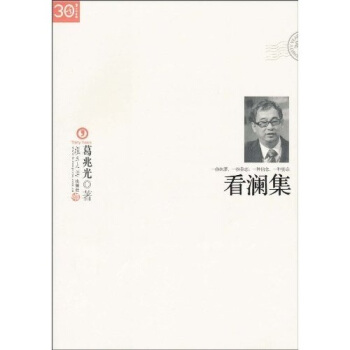

![社会支配论 [Social Dominance] pdf epub mobi 电子书 下载](https://pic.tinynews.org/10379923/ff4b931b-099e-4a1a-b15f-d2206cc8bff6.jpg)
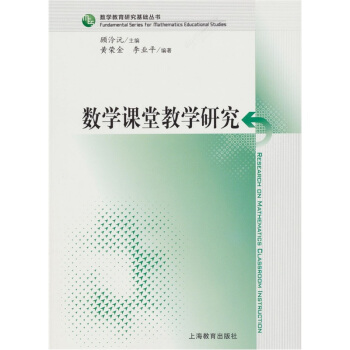
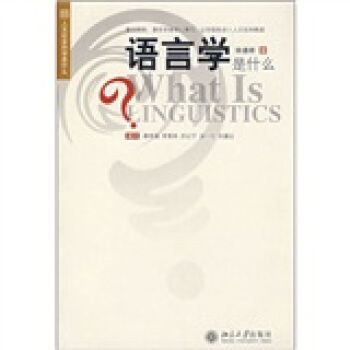
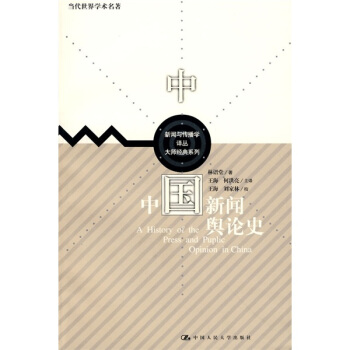
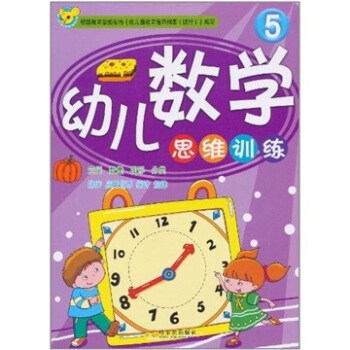
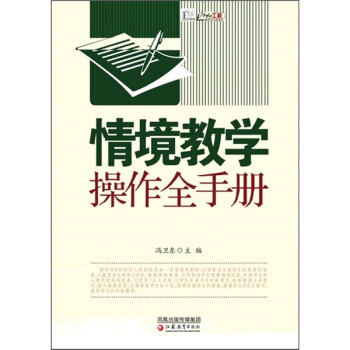
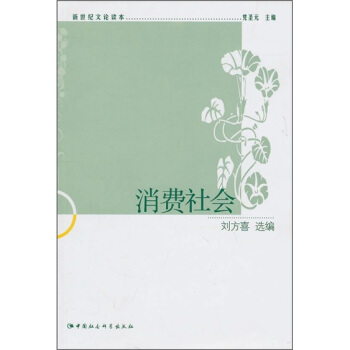


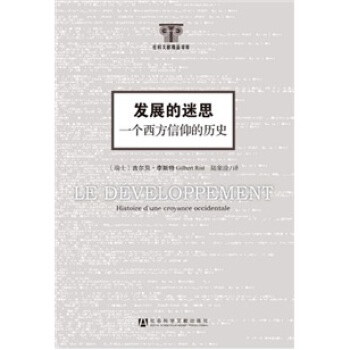

![芳香图书馆 [The Fragrant Library] pdf epub mobi 电子书 下载](https://pic.tinynews.org/10878464/b6618811-b078-4d71-97c9-0b28bb164b13.jpg)
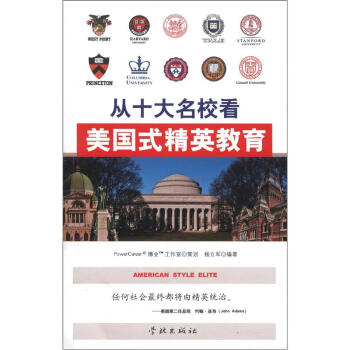
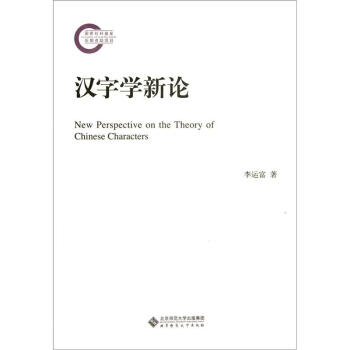
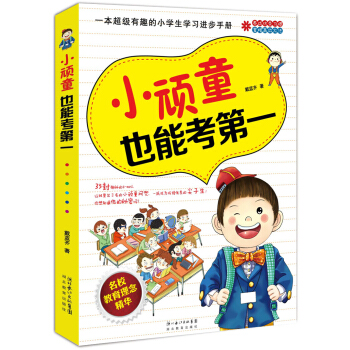
![未名社科·传播政治经济学译丛·传播理论史:回归劳动 [Theorizing Communication a History] pdf epub mobi 电子书 下载](https://pic.tinynews.org/11110361/rBEHaVCI2YsIAAAAAADirRBIGj4AACemAArt2cAAOLF048.jpg)
